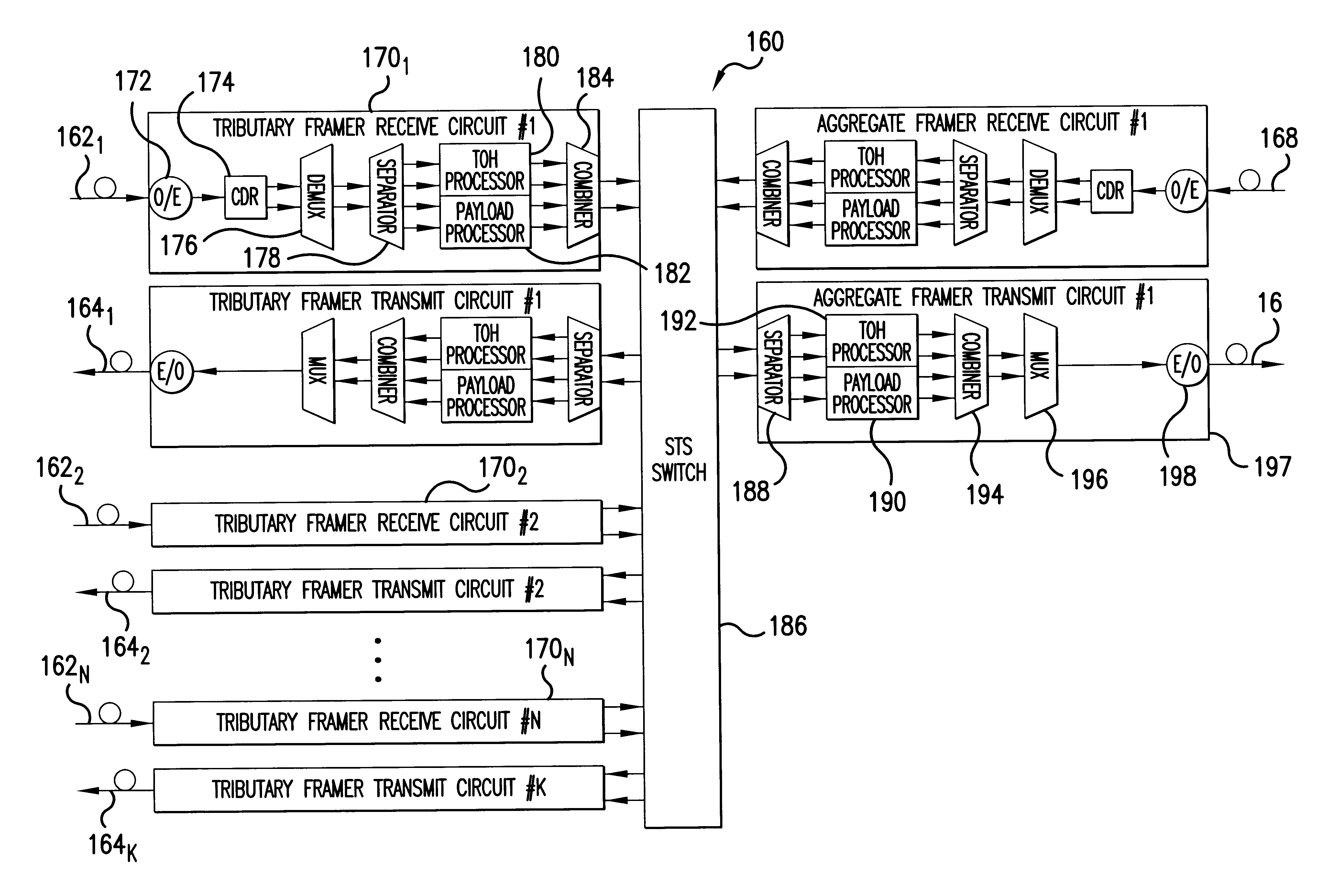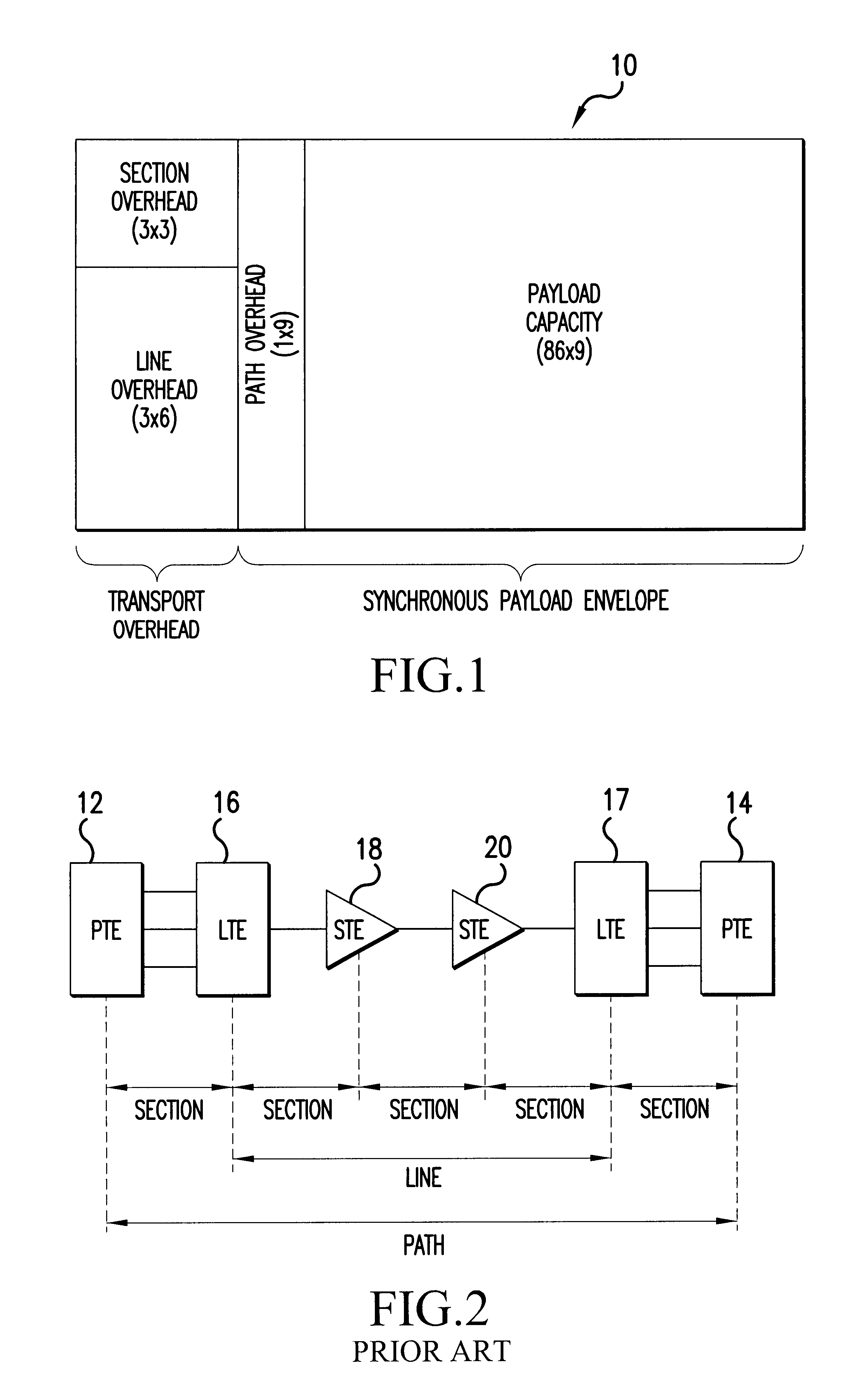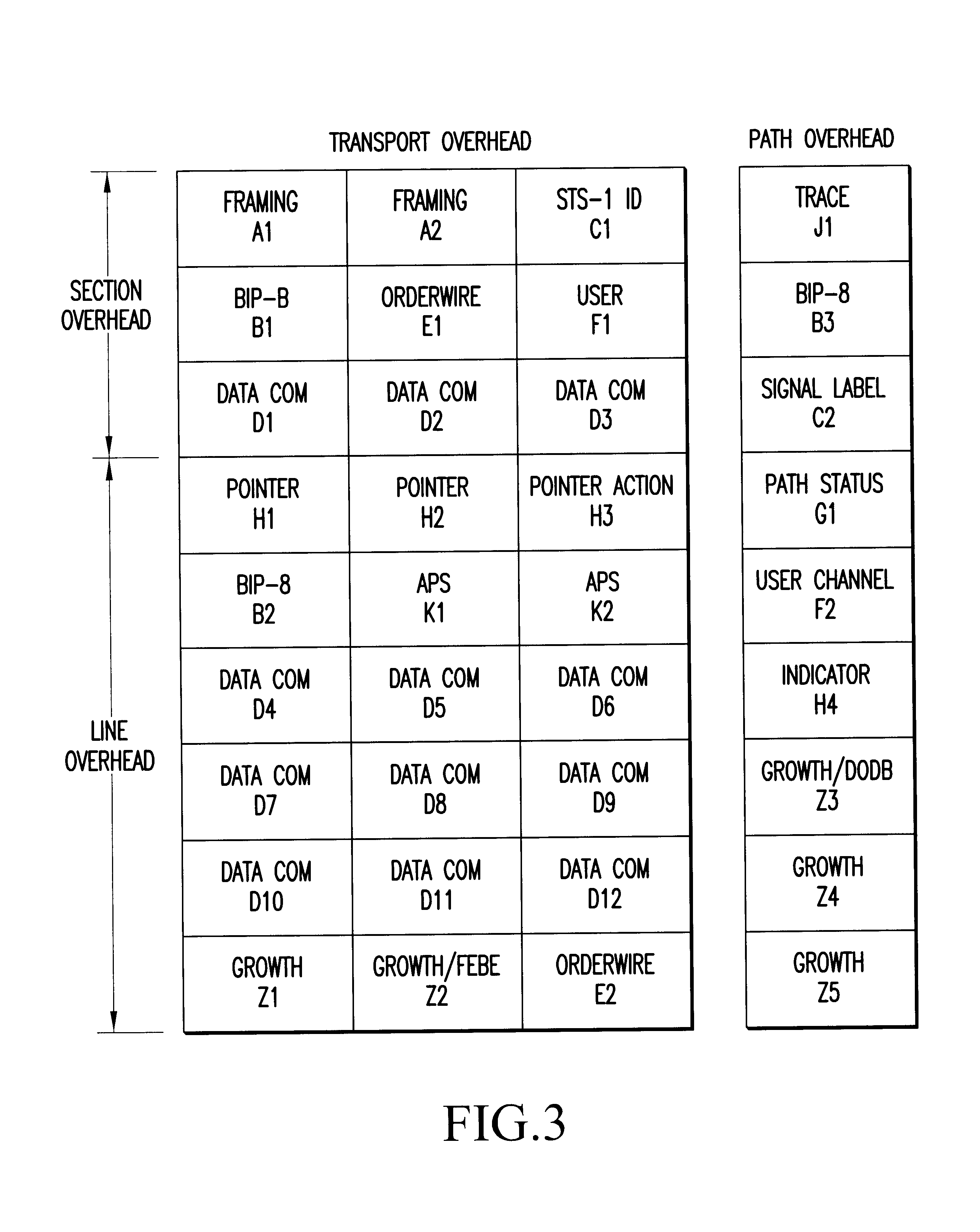Semi-transparent time division multiplexer/demultiplexer
a time division multiplexer and semi-transparent technology, applied in time-division multiplexing selection, multiplex communication, synchronisation signal speed/phase control, etc., can solve the problems of prohibitive expansion cost, limited capacity of existing waveguide media, etc., and achieve the effect of transparency of toh
- Summary
- Abstract
- Description
- Claims
- Application Information
AI Technical Summary
Benefits of technology
Problems solved by technology
Method used
Image
Examples
Embodiment Construction
As is known, the SONET standards ANSI T1.105 and Bellcore GR-253-CORE, define a physical interface, optical line rates known as optical carrier (OC) signals, a frame format, and an operation, administration, maintenance, and provisioning (OAM&P) protocol. User signals are converted into a standard electrical format called the synchronous transport signal (STS), which is the equivalent of the optical signal to be transmitted on an optical network. The basic STS-1 frame consists of 90 columns by 9 rows of bytes and has a length of 125 microseconds, resulting in a rate of 51.840 Mb / s. Higher rates (STS-N, STS-Nc) are built from STS-1, and lower rates are subsets of STS-1. Advantageously, the SONET standard facilitates multiplexing of various STS-N input streams onto optical fiber channels.
Turning to FIG. 1, there is illustrated the structure of a basic STS-1 frame 10. As shown, the frame comprises a transport overhead (TOH) consisting of three columns and 9 rows, and a synchronous payl...
PUM
 Login to View More
Login to View More Abstract
Description
Claims
Application Information
 Login to View More
Login to View More - R&D
- Intellectual Property
- Life Sciences
- Materials
- Tech Scout
- Unparalleled Data Quality
- Higher Quality Content
- 60% Fewer Hallucinations
Browse by: Latest US Patents, China's latest patents, Technical Efficacy Thesaurus, Application Domain, Technology Topic, Popular Technical Reports.
© 2025 PatSnap. All rights reserved.Legal|Privacy policy|Modern Slavery Act Transparency Statement|Sitemap|About US| Contact US: help@patsnap.com



